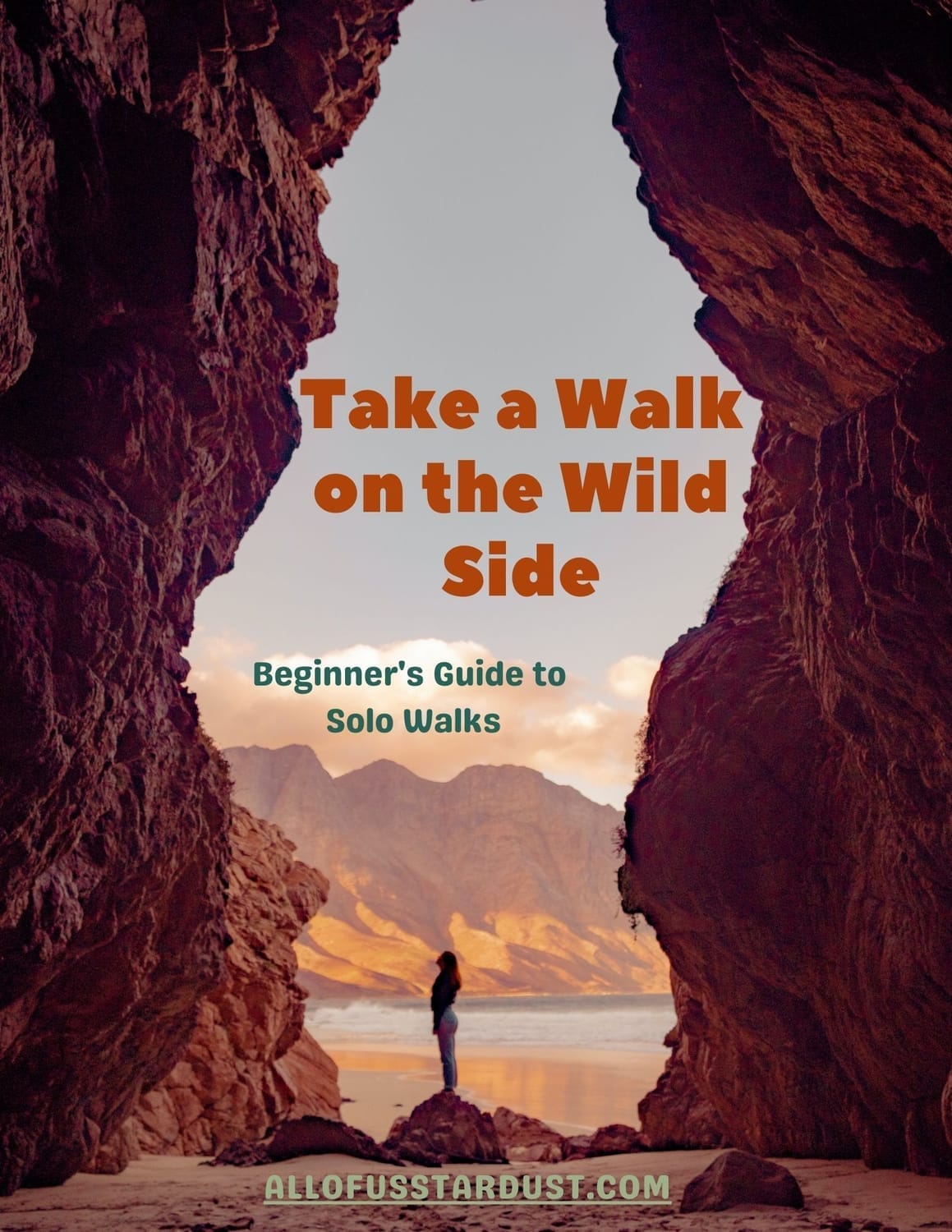Nature Therapy for ADHD
Recently, I was diagnosed with Adult Inattentive Attention Deficit/Hyperactivity Disorder (ADHD). This is a genetic neurodevelopment disorder that is diagnosed in 3% of adults. Discovering my diagnosis has been a bittersweet experience. It is bitter to learn that my brain is wired in such a way that makes it more challenging for me to exist within the confines of our modern world. It is sweet to finally understand why I feel and experience life the way I do and to learn ways to adapt.
Symptoms of ADHD vary from person to person, but some of the symptoms I experience are time blindness (that’s why I’m always late!), trouble regulating my emotions (going from 0-60 when I get frustrated), overwhelm, anxiousness, hyperfocus (at least I get a lot done) and easily distracted (Squirrel!).
I consider how much of my work entails helping other people to overcome their own anxiousness, depression, and stress to find calm, connection, and contentment. Whether it is teaching yoga, meditation, ritual, nature therapy or intuition, I think it is no coincidence that I have wanted to help people discover the paths to wholeness that have helped me. And if they can help me, a neurodivergent, then they can certainly help others.
Of course, upon learning this new cool thing about myself, I wanted to investigate if there was any research on how nature therapy could help with symptoms of ADHD.
You may have already heard me talk about Kaplan and Kaplan’s Attention Restoration Theory (ART). Steven and Rachel Kaplan developed this theory in the late 1980s and early 90s as technology rapidly increased (Internet!) and so time indoors also increased. Less and less people, especially children, spent time out of doors in the natural world. ART hypothesizes that time spent outside in green spaces can renew your attention and restore your ability to concentrate, following a period of mental exertion such as work, studying, insomnia, stress, etc.
I definitely feel the effects of being outside after I spend two hours in hyperfocus working at my computer without a break for anything, even food (and let’s be honest, the bathroom). It’s almost like I can immediately begin to breathe again and shake off all the tension I was holding.
This tracks with what the Kaplans theorize. They suggest that there are four stages that our cognition goes through on the way to full restoration. Stage one is a clear head. All the worries, challenges or intellectualizing that you were previously working on soon dissipate and disappear. The brain fog blows away with the gentle breeze on the air. I sometimes feel like as soon as I step out my front door, see the wide-open sky and inhale the scent of sage, my mind instantly releases. I’m suddenly like, "What blog post?"
Stage two is mental fatigue recovery. This is when your attention is restored to your normal functioning levels. When I’m feeling upset or anxious about something, I might hyper-fixate on it and find myself in a negative spiral. It can be really hard to step out of the spiral and gain some peace. That’s why I go for a walk. As I stroll through the sage, moving my body, viewing the wide expanse of the mountain range, I am able to get perspective and recognize that my mind is in a spiral. Instead of being so lost in it that I can’t get objectivity, I notice that my focus is out of control. I can begin to reel my mind back in and restore it back to a more reasonable cognitive state.
Stage three is soft fascination. This is the stage when you can be gently distracted and in a state of curiosity and wonder. All the internal noise disappears and inner peace kicks in. For me, this is when all the juicy creativity starts flowing. I find my groove. I’m admiring the alpine glow on the snow peaked mountains as the sun sets behind me, bursting into a rainbow of pastels. I suddenly know exactly what I need to do for my next ritual. All is well with the world.
The final stage, which occurs after a longer period of time, is when you are fully relaxed, restored and renewed. It might also be a time of deep reflection on your life, purpose, and goals. I love to camp. Camping for me is when I can reach the most deeply felt sense of equilibrium in my being. After falling asleep with the sunset, spending the night sleeping on the earth, and awakening with the first rays of the sun, I feel fully at peace. Moving with the rhythms of the sun, instead of the clock, is where it’s at for me. Who needs time when you’re in the wilderness? The forest is timeless. The desert is infinite. The ocean is ageless. Just thinking about it is causing me to breathe deeper and relax more.
There have been multiple studies done on ART that have helped to support the theory. I encourage you to research it more if you are interested. Most of the studies related to ADHD were on children. A study from 2011 compared the behavioral, emotional, and cognitive functioning of children with ADHD during visits to two different areas: a wooded area and a small-town area. The children were found to have improved concentration and improved behavioral problems in the woods. A 2014 study explored the effects of 20-minute walks in either a natural area or an urban area on measures of cognitive performance and symptoms of ADHD. Those who completed the nature walk reported improved cognitive performance and reduced ADHD symptoms.
Scientific studies aside, from my own experience and those I have witnessed in my students and people I guide, I deeply believe in the positive effects of time spent in nature on neurotypicals, neurodivergents and everyone in between.
Now, please excuse me, I’ve got to get off this computer and get outside!
If you are interested in testing out ART for yourself, follow this formula for creating the perfect environment:
Categories
Subscribe
Dive into the heart of nature with our weekly newsletter with nature writing that reconnects you to the earth's wonders. Plus, stay updated on events designed to bring our community closer to the natural world.
Created with © systeme.io






